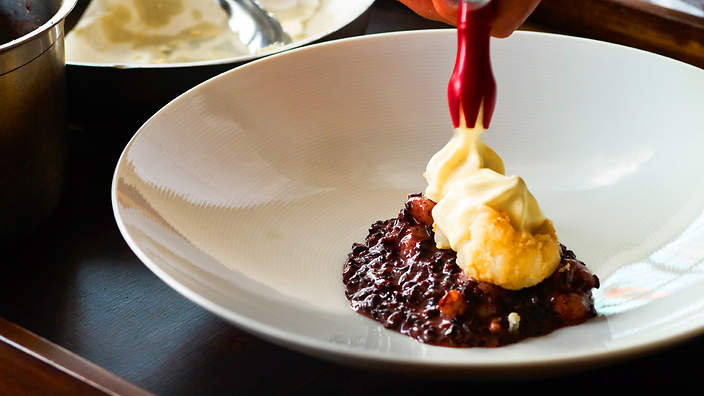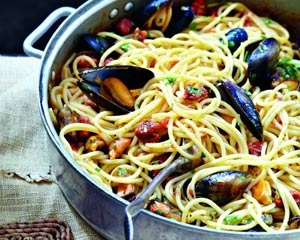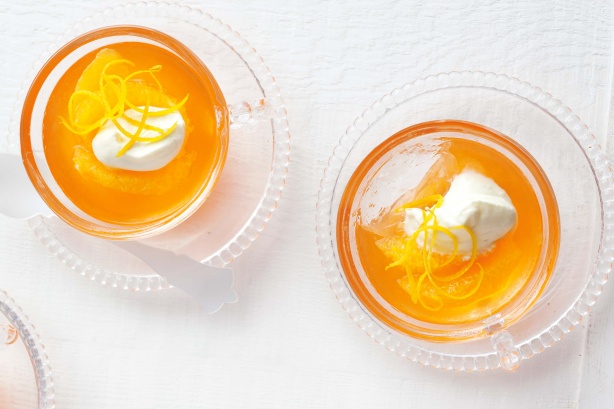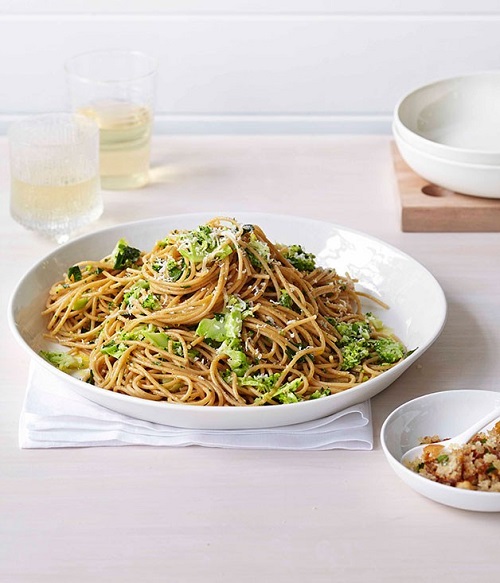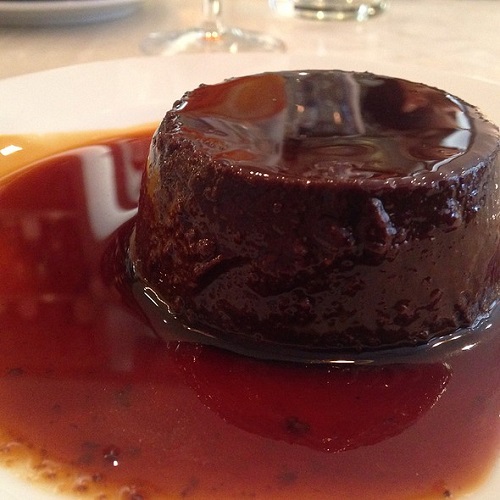
I recently was asked to make the most divine of chocolate puddings I could come up with for a friend’s birthday. The only specific instructions I received were that it had to include chocolate, caramel and rum and it had to pack a flavour punch not to be forgotten. Now I’ve made many a chocolate cake or pudding in my time, but I knew this time, the gauntlet had really been thrown down.
Sitting down in my office surrounded by books, I started to trawl through them – a daunting task I can assure you when you have so many and you are looking for that true ‘chocolate pudding needle in a haystack’.
Then I remembered something – a pudding made famous by Jacob Kennedy of Bocca di Lupo in London. If you have had the extraordinary experience of dining at this establishment, you will know that when I say it is unforgettable that it is indeed just that. HIs recipes are amazing and opening his famed cookbook Bocca, I found it – Bonet a dessert of Piedmont. This had just what I wanted and as he remarks, this is not a delicate dessert – the more chocolate, rum, caramel, chocolate and rum again that was added, the better it becomes. You can make this in a bundt mould and turn it out, or alternatively, as I did, in a round cake mould.
Here is that recipe and believe me it is worth every effort – it is nothing short of divine!!
Bonet
280g caster sugar
500ml milk
80g cocoa powder
50g dark, bitter chocolate, chopped
1 double espresso (50ml)
1 teaspoon vanilla extract
2 large eggs
2 large egg yolks
3 tablespoons run
200g amaretti biscuits
Most people make caramel by adding water to sugar, because they live in fear of it. A life lived in fear is a life halve lived, and you can make a brilliant caramel, even more reliably, without water. Take a scrupulously clean pan – it is best if the walls meet the base in gently rounded corner, and both are thick. Put the sugar in it and place over a high heat. Stir with a metal spoon, not too vigorously, and watch as the sugar first heats, then start to clump together, then melts into a pale amber caramel. This is not yet what you are looking for, so leave the pan on the heat until the colour turns a deep chestnut brown, and starts to smoke a little faster. Take if off the heat and leave it in the pan – it will continue to cook.
The moment you fear the caramel night soon become too bitter, pour it into a bundt tin (or use a doughnut-shaped mould, or a simple loaf tin). Wearing gloves for protection, carefully rotate the mould to coat the sides thickly, and spoon it up the central projection of the tin (if you are using the bundt tin). Keep on turning and spooning until the caramel has set.
Bring the milk to the boil. Beat together all the remaining ingredients except the amaretti to make a thick paste, then add the boiling milk, very gradually at first, beating all the time to avoid lumps. Crumble the amaretti in your hands and beat them into the mixture. Let the mixture stand in the mixing bowl for 15-20 minutes so the amaretti are thoroughly soused, and whisk again until they no longer rise to the surface, then pour into the mould. In either case, stand the tin on top of a submerged tea-towel (to steady it) in a pan of preheated water that comes to the level of the top of the bonet but not to the top of the tin.
Cover the mould with foil to protect the surface from the hot air of the moderate oven (160C/140C fan/Gas 3) and bake for 45 minutes or until just set in the middle. Lift the mould from the pan, leave to cool, then refrigerate until ready to turn out and serve.
It is best to wait overnight before unmoulding for as much caramel sauce as possible to develop – it slowly dissolves in the pudding’s moisture to make the syrup – as it is this that makes the pudding so very delectable.



